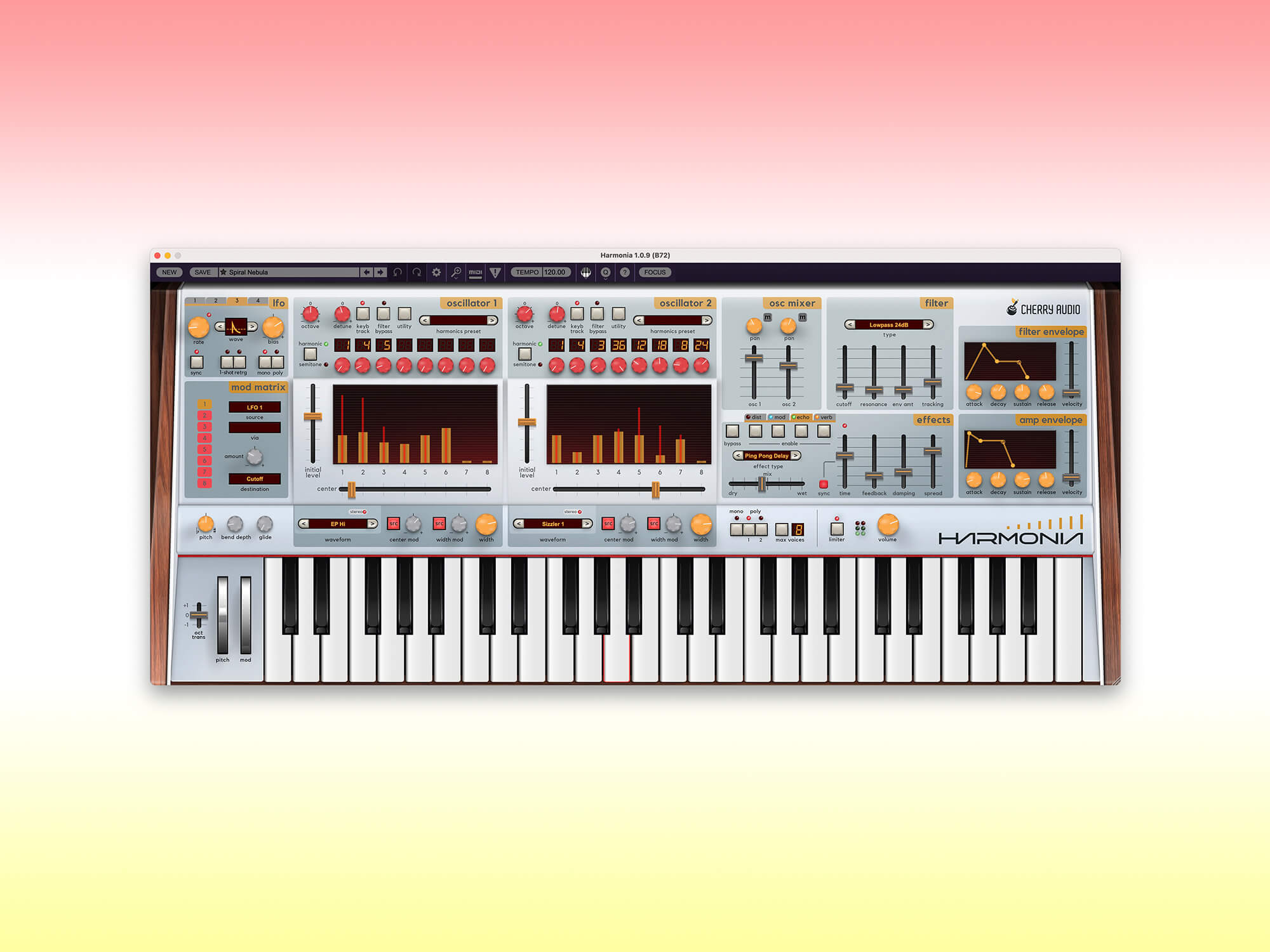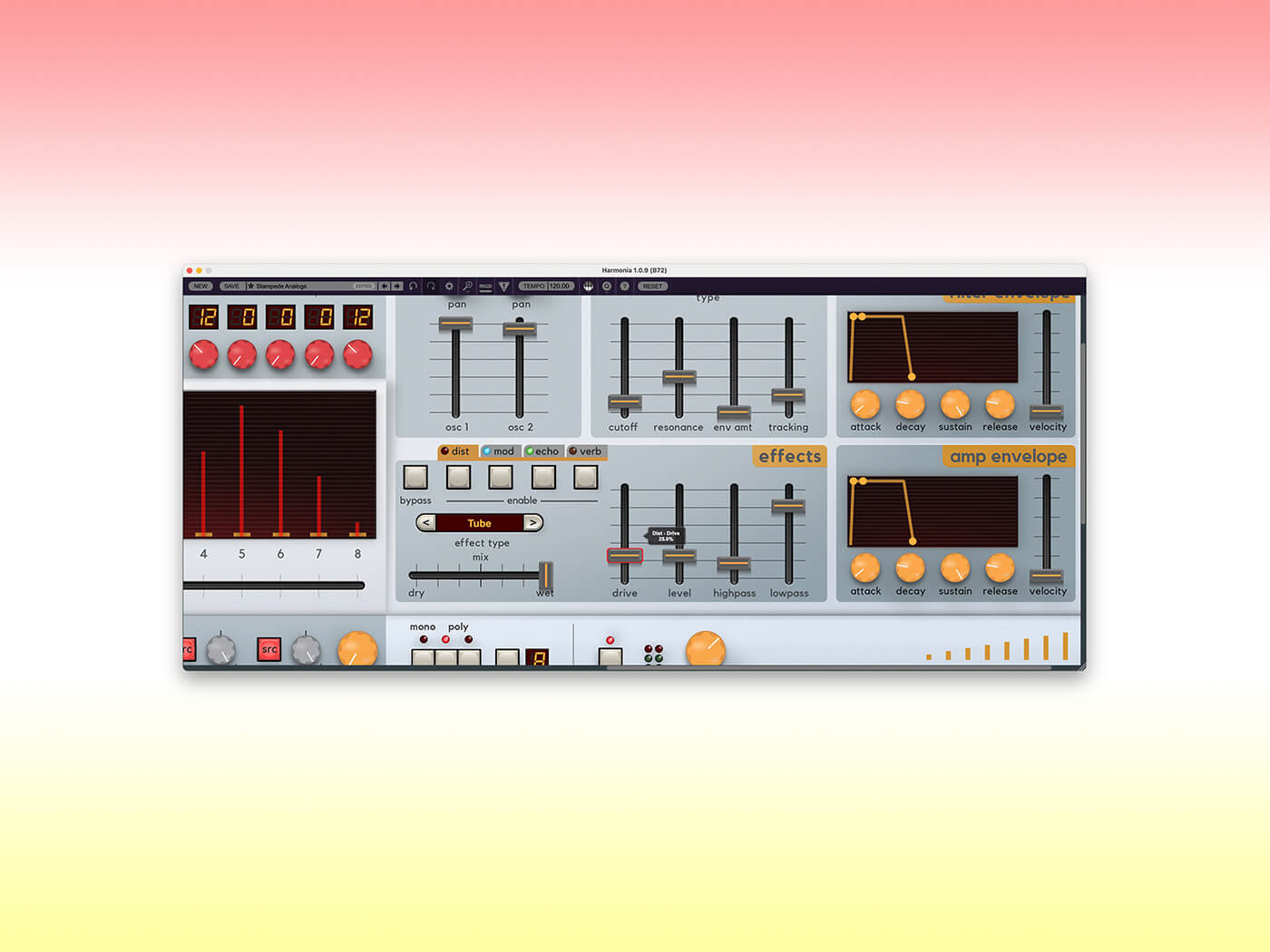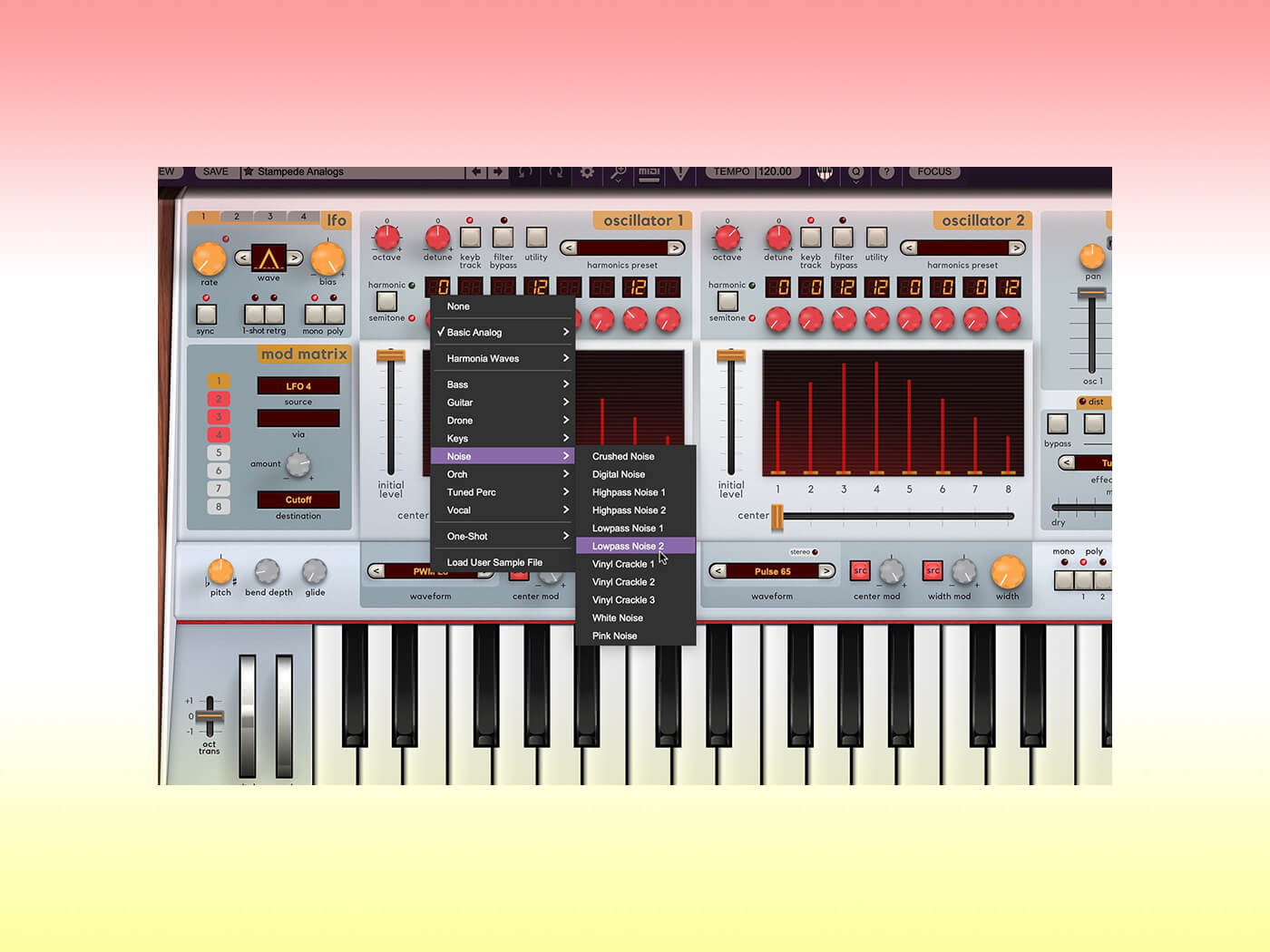Cherry Audio Harmonia – a multi-talented synth that makes harmonic scanning a breeze
Cherry Audio opens up new worlds of harmonic experimentation for sound designers. But will other musicians find their needs served by this sample-based synth?

Cherry Audio Harmonia. Image: Cherry Audio
Review Overview
Our rating
8
Our verdict
⊕ Easily create harmonic variations
⊕ Near-infinite tweaking options
⊕ The sequences are great fun
⊕ Crazy affordable
⊖ Harmonic sounds arguably have a limited genre span
You might associate Cherry Audio with its catalogue of excellent emulations of rare and classic synths, but the Californian developer also makes a few unique models of its own that are pretty impressive. To this family, which includes the Dreamsynth and Sines instruments, comes Harmonia. An original creation by Cherry Audio, Harmonia’s designed to give you rich and evolving polyphonic sounds associated with vector and wave sequencer synthesizers of the 1980s and 90s.
The synth’s parameters are laid out clearly and there’s relatively little menu-diving to be done. Given the bespoke design, even experienced synth users will benefit from a quick run through the getting started guide and the introductory videos, since they cut straight to the heart of how the instrument works. At its core are two sample-based oscillators that use mostly stereo samples taken from a range of synths, instruments, voices, lo-fi sounds and other sources. Each one uses a technique called ‘interpolated harmonic scanning’ to generate up to eight individual pitches at the same time, and these can be tuned either using semitones or a harmonic series.
Each oscillator’s section has a display that shows these eight pitches. You can alter each pitch using their unique knob and move between them using the Center slider under each display as well as changing their level sliders. Each oscillator also has an octave and detune control as well as a bunch of presets for both semitone or harmonic setups that dial in a ready-made setup. There’s also a randomise function to input entirely new data.
What this system means in practice is that you can create unique morphing tones by manipulating these sliders, both in real time or by automating the sliders via MIDI. There’s a choice of 285 waveforms that the oscillators can use as well as the option to import and store your own, making the selection of sounds on offer more or less infinite. Bundled waveforms are chosen by simply clicking on their name to reveal a menu.

Things go to the next level when you start to leverage the powerful modulation matrix which is able to route modulator signals between any of 19 sources, and 80 destinations. This enables you to start animating sounds and creating sequences, and by calling up any of the sequence patches from the presets you’ll see how sources have been routed to parameters like the Center slider (to dynamically choose new pitches), effects settings and more. The result is to open up a whole new dimension of the instrument, taking it from making harmonically rich and interesting textures to full-blown dynamic sequences. It’s similar to how some other synths use LFO modulation of parameters to trigger different pitches, only here it’s doing it by selecting different pitches from within the harmonic generator instead of altering the oscillator’s single pitch parameter, which is how it’s more commonly done.
Harmonia can operate in monophonic or polyphonic mode with up to 16 voices and, of course, you can balance the volume and pan settings of the two oscillators. There’s also a lot more sound shaping available, much of it a little more conventional than the harmonics stuff. Here, you get a multimode filter, amp and filter envelope sections and a master limiter.
There’s an impressive effects section featuring distortion, modulated delays, echo and reverb, each with their own controls and effect types for you to choose from. These are navigated and operated using a simple tab system and add plenty to the overall depth of the sounds, with a liberal dollop of echo and distortion for example livening up almost any patch. Performance controls including bend depth and note glide further add to the expressive options available to you.

It won’t be a huge surprise to learn that an instrument called Harmonia is geared largely towards generating harmonic variations. The powerful tuning options – eight per oscillator, multiple waveforms and multiple harmonic presets – mean you can create all manner of multi-tuned patches, blending and morphing them to create truly organic results and rich sounds.
The ability to play and change these in real-time also makes it quite special, fun, creative and reactive to your input. Of course, you might also find some of the time you’re actually detuning things – any instrument that lets you mess with tuning this much can also sound discordant if you want it to.
So there are plenty of interesting harmonic results to be had, but it’s the sequences that really elevate Harmonia beyond a very capable sound design tool to something that’s more widely useful across musical genres. Whether they’re quite simple, or fast and fiendish, the combination of LFO-triggered sequences and the multitude of pitches on offer together with the cool-sounding onboard effects provides excellent results. And of course, the dual oscillators mean you can combine differing playback styles within a single patch.
The selection of 350-plus presets should provide more than enough to get you up and running, but it’s in their modification, the tweaking of the different sections and even the importing of your own samples to use as the basis of sound generation that you’ll really get the most out of Harmonia. While it may initially present itself as a sound design machine, and a very good one at that, digging under the surface reveals more upbeat, animated possibilities. As ever with Cherry Audio, the price of admission is very reasonable and there’s a free demo version available, so you can check it out for yourself. You may be pleasantly surprised if you do.
Key features
- Dual sample-based oscillators
- 285 waveforms plus user import
- Interpolated harmonic scanning
- Mono or polyphonic, with up to 16 voices
- Semitone or harmonic modes
- Four tempo-syncable LFOs
- Multimode filter and multiple effects
- Expansive modulation matrix
- Fully MIDI automatable
- All plugin formats plus standalone
- Price: $49 (street)
- Contact: cherryaudio.com